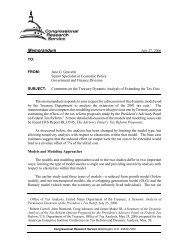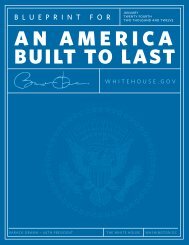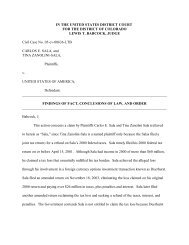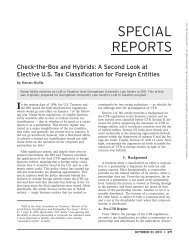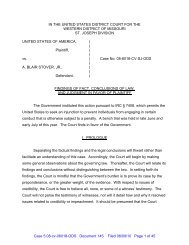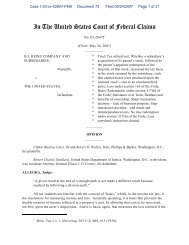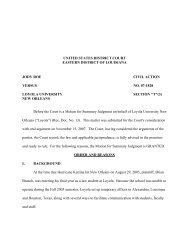1 TESTIMONY OF PROF. EDWARD D. KLEINBARD HEARING ...
1 TESTIMONY OF PROF. EDWARD D. KLEINBARD HEARING ...
1 TESTIMONY OF PROF. EDWARD D. KLEINBARD HEARING ...
- No tags were found...
Create successful ePaper yourself
Turn your PDF publications into a flip-book with our unique Google optimized e-Paper software.
One way to drive home the point that firms are awash in stateless income is tolook at the most recent empirical work in this area, by Harry Grubert of the U.S. Treasuryand Rosanne Altshuler at Rutgers. 3 Working directly with tax return data, they found thatforeign subsidiaries of U.S. firms today enjoy effective tax rates of less than five percenton nearly 37 percent of their total income. Fifty-four percent of U.S. controlled foreigncorporations‟ total income is taxed at effective rates of 15 percent or less. As Dr. Gruberthas noted in another context, these low rates cannot be explained as the consequence ofhundreds of billions of dollars of investments in pubs in Ireland. What is more, these totalincome numbers include large petroleum companies and other natural resources firms,which generally are stuck with very high foreign tax rates that cannot be avoided, due tothe fixed location of those resources. If natural resources firms were excluded, theproportion of super low-taxed total income would increase.In classic academic style, Drs. Grubert and Altshuler buried the lede deep in theirpaper, but these hard data drawn from actual tax returns are irrebuttable proof of themagnitude of stateless income generation in the wild. Corroboration can be found infirms‟ financial statements 4 and, indirectly in their extraordinary hoards of offshore cash(and the rapid rise of those cash balances), now totaling nearly $2 trillion. 5It sometimes is argued that only high-tech and pharmaceutical firms takeadvantage of stateless income generation technologies, because they own high-valueintangibles that they can locate in a tax haven, and thereby direct royalties to thatintangibles ownership vehicle. It certainly is true that such firms are the beneficiaries ofextraordinarily low effective tax rates on their foreign income – often in the single digits– and that they rely heavily on artificial arrangements that purportedly transfer theownership of those intangibles to wholly-owned subsidiaries that conveniently claimresidence in very low-tax jurisdictions (or in the case of Apple, claim to be resident3 Harry Grubert and Rosanne Altshuler, Fixing the System: An Analysis of Alternative Proposalsfor the Reform of International Tax, draft of May 12, 2013 available athttp://papers.ssrn.com/sol3/papers.cfm?abstract_id=2245128.4 Stateless Income, 11 Florida Tax Rev. 699, 739 (2011) (Microsoft effective foreign tax rate of 4percent, and Google effective foreign tax rate of 2.4 percent).5 Wall St. J., CFO Journal, Indefinitely Reinvested Foreign Earnings on the Rise, May 7, 2013.6







